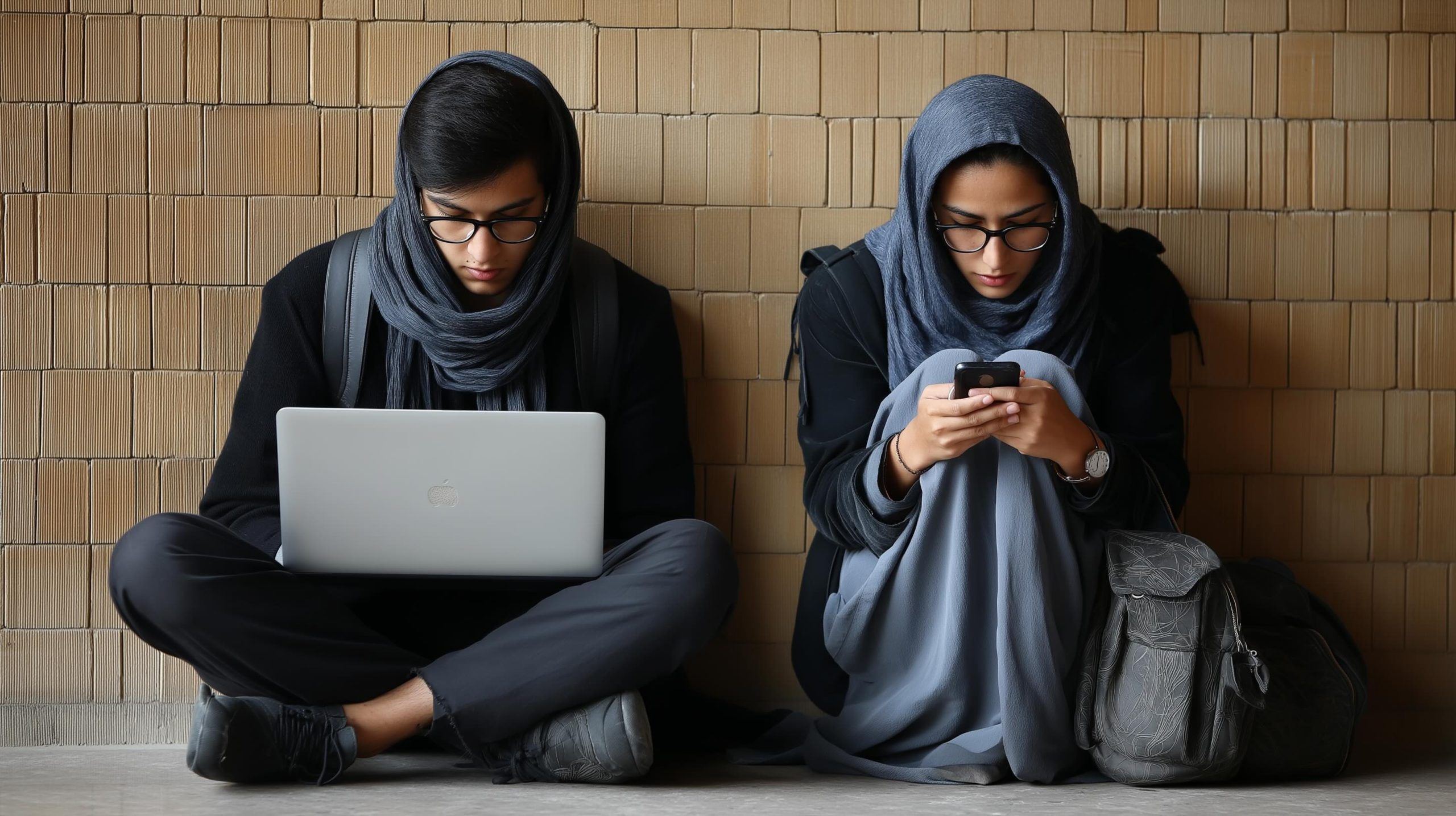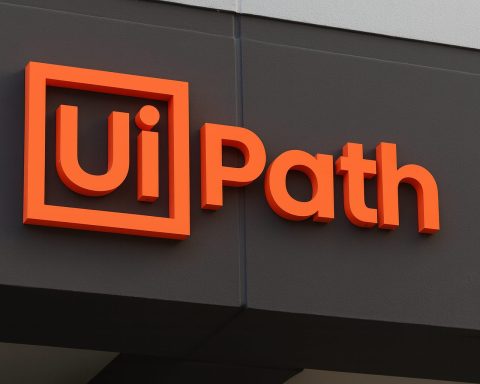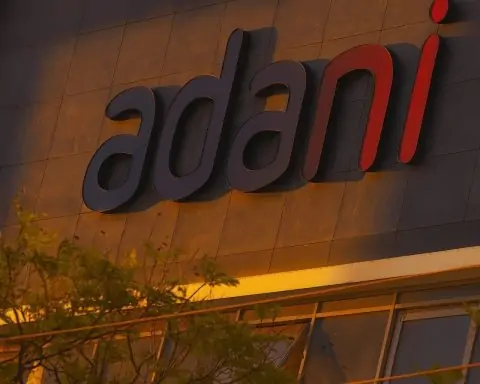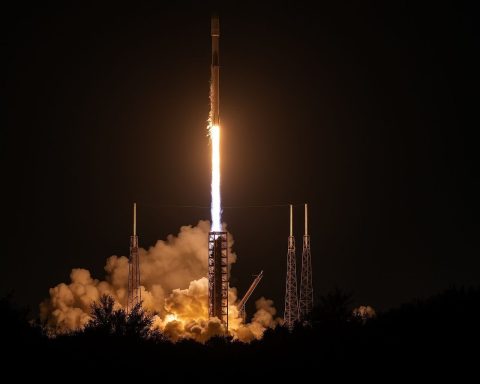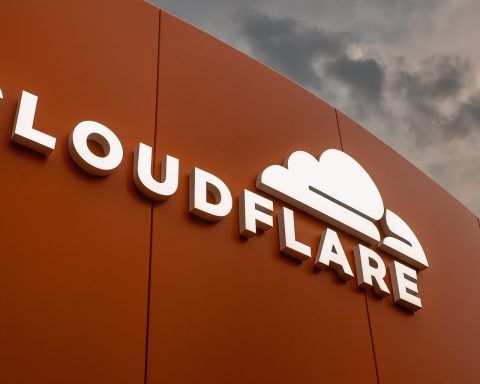- Iran aims to connect 20 million premises with fiber by the end of 2025 under the National Fiber Optic Plan, but rollout is behind schedule.
- As of early 2024, Iran had 73.1 million internet users (81.7% penetration) and 146.5 million mobile connections, indicating widespread multi-SIM use.
- Median download speeds were about 15 Mbps on fixed broadband and 37 Mbps on mobile as of May 2024, with mobile often outperforming ADSL.
- Iran’s 4G coverage is broad (around 90% device coverage), while 5G is in its infancy (about 29% coverage in 2023) with up to 4,000 5G base stations projected by March 2025.
- The National Information Network (NIN) is a state-run intranet that can keep domestic sites running even if international links are cut.
- International bandwidth dropped from about 8 Tbps in 2021 to ~3 Tbps during peak restrictions in late 2022, recovering to ~6 Tbps by early 2024.
- The Mobile Communications Company of Iran (MCCI) controls about 66% of the internet market, with TCI at ~13% and MTN Irancell at ~10%, giving the top two providers ~80% of access.
- Starlink activated in Iran in September 2022, with estimates of up to 20,000 terminals operating inside the country by end-2024 and more than 100,000 people benefiting by early 2025, offering speeds up to ~150 Mbps.
- Iranian authorities block or heavily filter major platforms (Facebook, X, YouTube, Instagram, WhatsApp, Telegram, TikTok) and shut down or throttle during crises, including a June 13, 2025 blackout.
- VPNs and circumvention tools are widely used, with about 64% of users employing VPNs in 2023 and a market of roughly 5,000 billion tomans (≈ US$85 million) by late 2023, while unlicensed VPNs were banned in February 2024.
Infrastructure Overview
Iran’s internet infrastructure is a mix of aging fixed broadband and expanding mobile networks, all under strain from sanctions and state control. Fixed broadband largely relies on ADSL (phone-line internet) and a limited fiber-optic rollout. The government has ambitious fiber plans – aiming to cover 20 million premises with fiber by end of 2025 – but progress has been slow [1]. As of early 2024, Iran had about 73.1 million internet users (81.7% penetration) and 146.5 million mobile connections, indicating many users carry multiple SIMs [2]. Median download speeds remain modest: about 15 Mbps on fixed broadband vs 37 Mbps on mobile as of May 2024 [3]. This means mobile 4G networks often outperform Iran’s sluggish ADSL links. Indeed, the country’s 4G coverage is broad (around 90% device coverage), while true 5G is in its infancy (accessible to only ~29% in 2023) [4]. Major operators have piloted 5G in urban centers, and the telecom regulator projected up to 4,000 5G base stations by March 2025 [5]. However, rollout has been hampered by limited spectrum availability and underinvestment [6] [7]. In short, Iran boasts one of the largest, youngest online populations in the Middle East, but outdated infrastructure and slow upgrades leave a gap between user demand and network quality.
Critically, Iran’s connectivity is shaped by the National Information Network (NIN) – a state-run domestic internet backbone. The NIN provides internal data centers, caches, and local services, and the government has expanded this intranet as a way to reduce dependence on the global internet [8]. In practice, the NIN allows authorities to keep domestic sites running (banks, government services, local apps) even if international links are cut. This was by design: officials openly prioritize the NIN to enable “national internet” operations and deliberately throttle international bandwidth to push users onto sanctioned domestic platforms [9]. International connectivity exists via multiple fiber routes and submarine cables (through the Persian Gulf, Turkey, etc.), and upstream diversity is rated “very good” with multiple global links [10]. Yet actual international traffic has been curbed – total international bandwidth dropped from 8 Tbps in 2021 to about 3 Tbps during peak restrictions in late 2022, recovering to ~6 Tbps by early 2024 [11] [12]. This fluctuation reflects how political decisions, not just tech, dictate Iran’s internet capacity. Moreover, hardware sanctions have impeded network upgrades: importing modern telecom equipment is difficult due to U.S. and EU sanctions [13]. Iranian operators resort to smuggling parts or relying on Chinese vendors, which raises costs and limits access to cutting-edge gear. All told, Iran’s internet infrastructure is a patchwork – improved 4G mobile reach, stalled fixed-line development, and a state-built intranet capable of isolating the country at will.
Major ISPs and Market Share
Iran’s ISP market is dominated by a few big players, mostly state-owned or affiliated, resulting in limited competition. The Mobile Communication Company of Iran (MCCI, also known as Hamrah-e Avval) – a sister company of the state telecom – is by far the largest provider, controlling about 66% of the internet market share [14]. MCCI is the leading mobile operator and has tens of millions of subscribers on 2G/3G/4G. The fixed-line incumbent, the Telecommunication Company of Iran (TCI), comes next with roughly 13% market share [15]. TCI owns the copper telephone infrastructure and DSL network nationwide, and while partly privatized, it remains closely tied to state interests. MTN Irancell, a joint venture partially owned by South Africa’s MTN, is the second-largest mobile operator with around 10% share [16]. Irancell has aggressively grown its 4G subscriber base but still lags MCCI. A handful of private ISPs account for the remainder – notably Shatel (market share ~2% [17]), as well as Pars Online, HiWeb, and a dozen others licensed as “Fixed Communication Providers.” These smaller ISPs often resell TCI’s infrastructure or offer niche broadband services. There is also Rightel, the third mobile operator focused on 3G/4G, but it holds a minor subscriber share compared to the big two. Interestingly, even content delivery networks show up in market stats – for example, Cloudflare carries about 4% of Iranian internet traffic [18], reflecting how many sites use it as a proxy CDN. Overall, Iran’s telecom sector is a quasi-monopoly: the top two providers (MCCI and TCI) together dominate roughly 80% of access. The Internet Society rates Iran’s market competitiveness as “Very Poor” for consumer choice [19]. This concentration, coupled with heavy state ownership, makes it easier for authorities to enforce censorship or shutdowns through the ISPs (since most gateways are under government-linked companies). While there are numerous ISP brands, they operate under tight regulatory oversight and often uniform pricing, offering consumers little practical difference beyond customer service. In summary, Iran’s major ISPs are large, state-aligned entities with only a thin layer of private competition – a structure that reinforces government control over internet access.
Internet Pricing and Accessibility
Internet access in Iran has historically been subsidized and relatively cheap, but affordability is worsening due to inflation and policy changes. In 2023, authorities abruptly ordered ISPs to raise prices by 30–40%, sharply increasing costs for users [20]. This move was ostensibly to help ISP revenues and manage network congestion, but it made connectivity less affordable for many households. Even after the hike, Iran’s baseline prices can appear low in global terms – a low-volume mobile data plan costs under 1% of average monthly income (GNI) [21], meeting the UN affordability benchmarks. For example, a few gigabytes of 3G/4G data or a basic ADSL package might cost only a couple of US dollars at official exchange rates. However, Iran’s economic reality complicates this: with the rial currency’s weak value and high inflation, those “cheap” plans can still strain family budgets. Higher-speed unlimited plans or home fiber (where available) are much more expensive and thus out of reach for lower-income users. Moreover, the quality of service often does not match the price – paying for a 16 Mbps DSL line doesn’t guarantee anywhere near that speed due to infrastructure bottlenecks.
Rural users face additional accessibility challenges. In remote areas, often the only option is a mobile internet SIM, since laying fixed lines is not viable. The government claims that over 91% of villages (with 20+ households) now have some form of high-speed internet via the NIN (usually meaning mobile broadband coverage) [22]. But those connections might be slow or heavily shared. Meanwhile, urban users in Tehran or major cities can access newer services like VDSL or fiber-to-the-home in certain districts – at a premium price. For instance, the communication ministry has pushed a “National Fiber Optic Plan” to offer fiber broadband to millions, which could dramatically increase speeds and justify higher tariffs [23]. Yet as of 2025, the fiber rollout is behind schedule and most people still rely on DSL or 4G hotspots. Another hidden cost is that many Iranians pay for VPNs or proxies to bypass censorship, which can cost several times more than their regular internet bill [24]. A recent study noted that users bear an “unfair financial burden” for circumvention tools, effectively making unrestricted internet a luxury item [25]. In summary, internet access in Iran is officially inexpensive by global metrics, but the true cost is rising. Government-mandated price hikes, the need for VPNs, and inconsistent service quality mean Iranians often pay more – either in cash or in time lost to slow networks – to get connected.
Urban vs. Rural Connectivity
A mobile network tower on a hilltop in rural Iran, part of efforts to expand broadband to remote villages (PressTV, 2025)
Iran exhibits a significant urban-rural digital divide, although the gap has narrowed recently. In cities, internet usage is ubiquitous – about 83% of urban residents were online by 2021, compared to roughly 66% in rural areas [26]. Metropolitan centers like Tehran, Isfahan, Mashhad, and Shiraz benefit from better telecom infrastructure, higher 4G tower density, and multiple ISP choices. Urban dwellers are more likely to have home broadband (ADSL or fiber) in addition to mobile data. By contrast, many rural and remote regions traditionally had limited or no access, relying on patchy dial-up or satellite phone links in the past. This is changing: the government has invested in extending mobile coverage to villages as part of its “communication justice” initiative [27]. As of early 2025, officials report that out of 39,645 villages with 20+ households, about 10,000 still lack broadband – and they pledge to connect all of them by 2028 [28]. Many newly connected villages get internet via the NIN intranet and 4G/3G base stations on nearby mountaintops (often solar-powered). The PressTV image above shows a lone cell tower serving a vast rural landscape – a common scene as Iran expands coverage to rugged areas [29].
Despite these improvements, rural connectivity often remains slower and less reliable. Villagers might only have a 3G signal, or a single shared WiMAX link, yielding lower speeds than city networks. Maintenance is an issue too – infrastructure in hard-to-reach areas can be knocked out by weather or power outages and take longer to fix. The government’s claim of “140% broadband penetration” nationwide is boosted by counting multiple mobile SIMs per user [30], which masks the fact that a rural family’s lone phone may be their only internet source. There is also a content gap: many global services are blocked or not localized for Persian, so rural users with limited digital literacy rely on state TV or domestic apps on the intranet. To address this, some programs have introduced local telecenters and provided tablets to village schools, but impact is limited. Ultimately, Iran’s urban population enjoys far greater connectivity options and speeds, while rural Iranians are just coming online via mobile broadband. The state’s promise to bridge the digital divide by 2028 is ambitious [31] – it will require sustained investment in rural telecom and perhaps leveraging satellite broadband for truly isolated spots. Until then, a significant urban-rural disparity in internet access and quality persists in Iran.
Government Censorship and Throttling Practices
Internet access in Iran comes with an extensive layer of government censorship and intentional slowdowns. The Iranian regime operates one of the world’s most restrictive online environments [32]. A centralized filtering system blocks thousands of websites and services deemed undesirable. All major international social media platforms – Facebook, Twitter (X), YouTube, Instagram, WhatsApp, Telegram, TikTok, Snapchat, and more – are either blocked or heavily filtered [33] [34]. Notably, Instagram and WhatsApp were the last widely-used apps that remained open, until authorities banned them in late 2022 amid the “Woman, Life, Freedom” protests [35]. Since then, Iranians have lost official access to virtually all global social networks and messaging apps, unless they use circumvention tools. Even app stores were targeted: the Google Play Store has been blocked (harming the ability of 90% of Android users to get updates) [36] [37], and Apple’s App Store was temporarily filtered as well [38]. News and information sites are likewise restricted – 49 of the world’s top 100 websites are blocked in Iran (only China censors more) [39]. This includes not just social sites but also many foreign news agencies, some university and scientific resources, streaming services, and even retail and gaming platforms [40]. The content rules are sweeping: anything critical of the regime, touching on sensitive politics, minority rights, uncensored entertainment, or “immoral” by Islamic standards can be blacklisted [41] [42]. A government body, the Committee to Determine Instances of Criminal Content (CDICC), continually issues blocking orders to ISPs [43]. There is no transparency or appeals process – over 8 million URLs have been blocked in the past 14 years without clear criteria or remedy [44].
Beyond static filtering, Iran’s government actively throttles and shuts down the internet during sensitive periods. When mass protests or security incidents occur, officials have repeatedly cut off regions or the entire country from the global internet. For example, during nationwide protests in November 2019, Iran imposed a near-total internet blackout for about a week, plunging citizens into digital darkness [45]. Again in September 2022, amid unrest over Mahsa Amini’s death, authorities severely restricted mobile networks, blocking VPNs and even encrypted traffic to prevent organizing [46] [47]. Throughout 2023, reports indicate the government routinely shut down or slowed internet every week in certain provinces each Friday to preempt protest gatherings after prayers [48]. The most dramatic example came in June 2025, when war with Israel escalated: Iran’s Ministry of ICT announced “temporary restrictions” on June 13, essentially switching the country to the domestic NIN network and cutting off global internet access [49] [50]. Connectivity plunged by up to 97% nationwide [51]. Officials claimed this was to “protect against Israeli cyberattacks” on critical infrastructure [52], but the effect was a near-total information blackout that also hindered civilians’ communications. During that crisis, both mobile and fixed networks were shut or heavily throttled, and VPNs and messaging apps were blocked wholesale [53]. Such tactics align with the regime’s established strategy: when faced with internal unrest or external threats, Iran’s leaders readily sever internet links to “maintain security,” even at great cost to the public [54] [55].
Throttling is another tool in the censorship arsenal. Even in calmer times, Iranians often experience artificial slowdowns, especially on international websites. Deep Packet Inspection (DPI) equipment is used to detect and limit traffic like VPN protocols, video streams, or large downloads, making the open internet painfully slow. Ironically, a local report found these crude filtering methods (like blocking whole IP ranges or misidentifying traffic) have caused network congestion and even accidentally hit domestic services [56] [57]. For instance, some ISPs blocked entire blocks of IP addresses to take out one offending site, knocking out many others inadvertently [58]. The result is that Iran’s internet sometimes performs like that of a far less developed country – with median bandwidth under 5 Mbps in 2023 and high latency [59]. The government’s heavy hand creates a paradox: by trying to control online content so tightly, they have degraded the overall quality and reliability of Iran’s internet for everyone. To sum up, censorship in Iran is all-encompassing – millions of websites and apps blocked, frequent deliberate slowdowns, and on occasion complete shutdowns of the global internet. This oppressive environment forces users to find workarounds or stick to the tightly monitored domestic intranet.
Use of VPNs and Circumvention Tools
Given the extensive censorship, a vast number of Iranians depend on VPNs, proxies, and other anti-censorship tools to access the open internet. Virtual Private Networks (VPNs) – both free and commercial – have become as essential as an internet browser for many users. A 2023 study estimated at least 64% of Iranian internet users use VPNs to reach popular foreign social media and sites blocked by the government [60]. This represents tens of millions of people routinely tunneling out of the government’s firewall. The demand has spawned a thriving underground market: Iran’s VPN and circumvention tool market was valued around 5,000 billion tomans (≈ US $85 million) by late 2023 [61]. Dozens of VPN apps, proxies, and even DIY tools like custom DNS resolvers (e.g. the Iranian “Shekan” DNS) circulate among users. During protest waves or crackdowns, usage of tools like Psiphon, Tor, or Lantern also surges as they adjust to blocks. However, the regime is actively fighting back. Iranian authorities employ sophisticated DPI to identify and block common VPN protocols and proxy servers [62]. Throughout late 2022 and 2023, popular services like NordVPN, ProtonVPN, OpenVPN-based servers, and many others were intermittently rendered inaccessible by the state’s filtering apparatus [63]. Users often play cat-and-mouse, jumping between different VPN providers or new server addresses as the old ones get blocked. This means additional hassle and cost – many Iranians pay multiple VPN subscriptions or buy access to private proxy servers for a stable connection abroad.
The government has also moved to legally criminalize unapproved VPN usage. In February 2024, the Supreme Council of Cyberspace issued regulations prohibiting the use of any VPN or circumvention tool that isn’t government-licensed [64]. Of course, the government does not license true anti-censorship VPNs; instead they have floated “official VPNs” for certain vetted institutions. By law, regular citizens caught distributing or using VPNs can face fines or even prosecution, though enforcement is selective and such bans are widely flouted out of necessity. Another development is the promotion of so-called “domestic circumvention tools.” Authorities claim people should use state-sanctioned alternatives to reach blocked content – likely meaning heavily monitored gateways that give access to specific sites while logging users. Unsurprisingly, these have few takers compared to real VPNs which at least offer some privacy. The end result is an ongoing arms race: Iranians rely on VPNs to reclaim some internet freedom, and the state constantly tries to disrupt that lifeline. For many tech-savvy youth, maintaining multiple VPN apps on their phone is second nature – when one fails, another might work. Some go further, using Tor browser over bridges, or accessing the internet through satellite links (as discussed later). Yet the cat-and-mouse game carries costs in speed and money, and the average user might struggle when the government clamps down hard. Still, despite periods of VPN scarcity (for example, during the 2022 protests, when even some VPNs were blocked at the protocol level), the Iranian online community finds ways to connect. This vibrant culture of circumvention underscores that where there is a censor, there is also a workaround – albeit one that many Iranians must pay for and constantly adapt to.
Policies, Sanctions, and the Politics of Access
The landscape of internet access in Iran is profoundly shaped by government policies and international sanctions. Domestically, Iran’s internet governance is defined by a desire to control and monitor. The Supreme Council of Cyberspace and the Ministry of ICT set stringent rules that ISPs must follow. Over the past few years, the state has pursued an “Internet User Protection Bill” (also known as the Cyberspace Protection Bill) – a draft law that would formalize even tighter regulation. While this bill has faced public criticism and isn’t fully enacted, parts of it have been quietly implemented [65]. It aims to require foreign tech platforms to have local representation or data centers (otherwise they get blocked), mandate user identity verification for internet services, and give security agencies greater oversight of traffic. Another controversial concept has been “class-based internet”, where different user groups (e.g. government officials, academics, kids) would get different levels of access. In early 2025, officials rebranded this idea as creating “Cyber Freedom Areas” – special zones or projects where internet restrictions would be lifted for certain approved uses [66]. For example, a tech park or university research hub might be designated a “Cyber Free Zone” with uncensored internet, ostensibly to spur innovation. The deputy ICT minister even claimed this is “not about dividing people, but giving equal opportunity for digital innovation”, pushing back on the “class-based” label [67]. Nevertheless, many observers see it as essentially allowing the elite or businesses access to the open web while the general public remains filtered. These policy debates highlight the regime’s dilemma: how to integrate into the global digital economy without loosening political control. So far, the trajectory has leaned toward control – with expanding surveillance, data localization, and harsher penalties for online dissent. New laws like the 2023 Hijab & Chastity law even extend to cyberspace, punishing women for online photos without hijab [68]. And numerous journalists and activists have been jailed or even sentenced to death for their online posts [69], reinforcing a climate of fear.
International sanctions add another layer of complexity to Iran’s internet. U.S. sanctions (in place for years over Iran’s nuclear program and human rights issues) restrict Iranian access to many technologies and services. There are exemptions – for instance, the U.S. Treasury’s General License D-2 explicitly permits providing personal communication tools (like messaging apps, VPN software, etc.) to Iranians. This allowed companies like Google, Apple, and satellite internet providers to legally offer certain services. Indeed, it was under such exemptions that SpaceX could activate Starlink for Iran in 2022 (more on Starlink below). However, many global tech companies still err on the side of caution or are unable to operate commercially in Iran due to banking and trade sanctions. This means no official app stores, no local Google presence, no Western cloud data centers in Iran. Key development tools like GitHub were partially blocked for Iranians until recently eased. Iranian startups and online businesses are cut off from popular payment gateways (PayPal, Stripe, etc., all blocked or sanction-barred [70]). On the infrastructure side, sanctions have prevented Iran from buying advanced telecom equipment from Western vendors [71]. The country turned to Chinese suppliers (e.g. Huawei) for 4G gear, but even Chinese firms tread carefully to avoid secondary U.S. sanctions. European Union sanctions have also come into play; in 2023 the EU sanctioned Iran’s telecom regulator and others for their role in internet crackdowns [72]. And in the latest conflict, some in Iran argue that U.S. cyber sanctions on Iran (meant to prevent Iran from obtaining cyber tools) indirectly justify Tehran’s paranoia about foreign cyberattack – which Tehran cited as a reason for its June 2025 shutdown [73].
Another aspect is Iran’s response to sanctions: geoblocking certain content from foreign access. It’s reported that around 600 Iranian websites, including over half of top government sites, deliberately block foreign IP addresses [74]. This is presumably to protect against attacks or avoid violating sanctions by serving content abroad. For Iranians inside the country, it creates a more insular web experience. All these factors – internal censorship policies and external sanctions – together have produced a unique digital landscape in Iran. It’s one where the state aspires to a “halal internet” cut off from the world, while users yearn for connectivity to that outside world. Notably, the clash of these forces has widened Iran’s digital divide with the rest of the globe. Iran’s internet quality metrics have slipped to among the worst of comparable countries [75], and experts warn that continued isolation will harm Iran’s tech growth. At the same time, sanctions also hurt ordinary users by limiting access to beneficial services (for example, no direct access to many online education or cloud platforms). In summary, Iran’s internet is a hostage to politics: domestic repression and international sanctions reinforce each other, making the simple act of getting online a matter entangled in global geopolitics and regime survival tactics.
Satellite Internet and the Starlink Phenomenon
In a surprising twist, satellite internet – particularly SpaceX’s Starlink – has emerged as a new player in Iran’s connectivity arena, offering hope for uncensored access but also provoking government ire. Traditionally, Iran tightly controlled satellite communications; owning satellite phones or satellite internet gear without permission has been illegal, framed as a security threat (or even espionage). This changed after the Mahsa Amini protests in 2022, when calls grew to bypass Iran’s curbs by using satellite broadband. In September 2022, Elon Musk tweeted that “Starlink is now activated in Iran”, after the U.S. cleared sanctions hurdles for tech companies [76]. That meant the Starlink satellite constellation could beam coverage over Iran – but still, physical Starlink receiver terminals had to be smuggled in on the ground [77]. Iranian activists and diaspora groups mobilized to covertly bring in Starlink kits through border regions (Iraqi Kurdistan, Turkey, the Gulf) despite great risks [78]. By late 2022 and into 2023, an underground network was distributing Starlink dishes to protest organizers, civil society groups, and remote communities. By all accounts this effort grew rapidly: by the end of 2024, as many as 20,000 Starlink terminals were estimated to be operating inside Iran via the black market [79] [80]. Forbes and Iran-focused outlets reported that roughly “20,000 people have high-speed internet access [via Starlink] that is nearly impossible for the Islamic Republic to censor” [81]. In reality, the user count could be higher, since one Starlink unit’s Wi-Fi can be shared – Iranian officials themselves claimed over 100,000 people were benefiting from satellite internet by early 2025 (likely counting multiple users per dish) [82]. This Starlink revolution marks a dramatic technological workaround to Iran’s draconian internet control. Unlike regular ISPs, Starlink connects directly via satellite, beyond the reach of Iran’s filters or shutdown switches. Users report being able to freely browse the open web with speeds up to ~150 Mbps, a game-changer for access to information.
The Iranian government has responded to Starlink’s spread with alarm. Security forces have carried out raids to confiscate smuggled Starlink dishes – for example, seizing 22 terminals in one 2023 operation and accusing dissidents of receiving them from “CIA-affiliated” networks [83]. Possession of unauthorized satellite equipment can lead to arrests; some users hide their Starlink units under camouflage or only operate them at night to avoid detection (the distinctive pizza-box sized dish could give them away). In public, Iranian officials initially downplayed Starlink as a “toy” or said it wouldn’t solve the country’s problems. But behind the scenes, the regime sees it as a serious threat to the monopoly over information. In mid-June 2025, Starlink took center stage during the Israel-Iran conflict. As noted, Iran imposed a near-total internet blackout on June 13, 2025, cutting off millions [84]. Within hours, Elon Musk announced on Twitter (X) that “The beams are on” over Iran [85] [86] – confirming that SpaceX had activated Starlink service to cover Iran’s territory at full capacity. This was essentially Musk flipping a switch to help Iranians get back online. Immediately, any Iranian with a clandestine Starlink terminal could reconnect to the outside world despite the government’s shutdown. Reports from that week indicate Starlink indeed provided a lifeline: by June 15, Starlink was allowing some Iranians to communicate and access information even while the domestic internet was off [87] [88]. Iranian users and activists publicly thanked Musk as news spread on social media outside Iran [89] [90]. Industry analysts estimate that around 20,000 Starlink dishes were active in Iran at that point and that demand was surging further [91]. Some sources even claim the number of Starlink units in Iran could be far higher – Capacity Media reported “over 100,000 terminals” in use (though that figure likely conflates devices and users) [92].
From a technical and geopolitical standpoint, Starlink’s availability in Iran is a potential game-changer. It effectively routes around government control, as traditional ISP links (fiber, mobile towers) can be shut down or monitored, but a satellite link is much harder to block unless the authorities physically locate and remove the dish. Iran does have jamming capabilities for satellite TV; however, Starlink’s modern spread-spectrum signals and moving satellites make broad jamming difficult without affecting other services. It’s a cat-and-mouse of a different kind: the state can only counter Starlink by hunting hardware on the ground. This has led to increasing reports of authorities searching cars or buildings for the telltale Starlink equipment. The presence of Starlink has also emboldened some activists – knowing there’s a fallback means information can get out during crackdowns (just as Starlink has aided Ukraine during war, it can uplink videos from Iran during protests). Still, Starlink is not a silver bullet: the cost is high on the black market (a terminal plus subscription can run thousands of dollars due to smuggling premiums), and the risk of discovery is real. Moreover, only a tiny fraction of Iran’s ~85 million people have access to one. Yet, its symbolic importance is immense. Starlink’s “beams” over Iran in 2025 demonstrated a form of global tech intervention in support of internet freedom [93] [94]. The Iranian regime’s internet blockade was partially undermined by a fleet of LEO satellites and an entrepreneur’s tweet. Moving forward, this raises tough questions: will Iran escalate legal punishments for Starlink users? Could it plead to international bodies to stop what it views as illegal service in its airspace? Or conversely, will more and more Iranians find ways to get these devices as a safeguard against censorship? As of mid-2025, satellite internet in Iran has transitioned from a fringe idea to a tangible reality – an underground network of Starlink users determined to stay connected, and a government scrambling to contain this new breach in its firewall.
Latest Developments and Outlook
The past weeks have seen fast-moving developments in Iran’s internet access saga. The conflict in June 2025 and the ensuing information blackout brought Iran’s connectivity issues to global attention. Even after “normalcy” returned and the government lifted some restrictions, Iran’s telecom sector remains on edge [95] [96]. The authorities proved willing to sever external internet links under the pretext of security, driving home the point that any connectivity can vanish overnight if the state deems it necessary. This has understandably rattled businesses and citizens alike. Telecom firms in Iran are now caught between obeying such orders and maintaining essential services [97] [98]. During the blackout, even domestic services like banking and government apps faced disruptions [99], which has likely increased pressure on the government to refine its shutdown tools (they want to cut off the world but not cripple their own economy). Indeed, the government is reportedly refining its approach by encouraging reliance on domestic platforms and even urging users to delete foreign apps like WhatsApp under dubious claims of espionage [100]. This hints at a drive to further decouple Iran’s internet from the global internet in everyday usage.
On the flip side, Iranians are more aware than ever of alternatives like Starlink. The mid-June events effectively “advertised” Starlink’s capability. News that Elon Musk activated Starlink over Iran on short notice went viral [101] [102], and Iranian diaspora groups have signaled plans to send even more terminals. It would not be surprising if the number of clandestine satellite users grows in coming months, despite the dangers. Internationally, there is momentum too: the U.S. government has been supportive of providing Iranians with circumvention tools (e.g. updating sanction waivers to include more tech). There is even talk of new satellite or high-altitude platforms to widen access. Meanwhile, Iran’s regime is doubling down on internal development. The concept of “Cyber Freedom Areas” introduced in May 2025 suggests the regime might selectively ease internet restrictions in controlled zones to boost the economy [103]. If implemented, we may see, for example, an “unfiltered internet hub” in Kish Island free zone or a tech incubator, while the rest of the country stays behind filters. This would formalize a two-tier internet system.
Iran’s infrastructure plans also continue, sanctions or not. The communications ministry in early 2025 reiterated its fiber-optic expansion goals (20 million fiber connections by 2025) and connecting all remaining villages by 2028 [104] [105]. Whether these goals are met is uncertain, but if achieved, they could improve raw connectivity (albeit still censored). On the mobile front, if spectrum is indeed released as promised [106] [107], 5G coverage could expand in late 2025–2026. However, without an open internet, higher speed only helps so much, as users will still find much of the global content throttled or blocked. In the policy arena, the aftermath of the protests and conflict likely means no relaxation of censorship in the near term. In fact, Iran’s leaders have openly praised the NIN intranet for withstanding the recent crises, and they may pursue more aggressive content policing. The EU’s sanction of Iran’s ICT officials and the outcry over shutdowns have not yet changed Tehran’s calculus [108].
In conclusion, internet access in Iran as of mid-2025 is at a crossroads of technology and authoritarian control. The country has built considerable connectivity infrastructure – millions of users, widespread 4G, a growing fiber network – but that connectivity comes with strings attached. Government censorship, throttling, and periodic shutdowns are a daily reality, prompting most Iranians to resort to VPNs and now even satellite links to communicate freely. International sanctions and Iran’s own isolationist policies further complicate matters, limiting both the growth of networks and the content users can reach. Yet, innovation finds a way: from creative VPN solutions to Starlink dishes on secret rooftops, the Iranian people persist in seeking open access. The latest developments, especially the Starlink activation during the blackout, highlight an ongoing battle between a tech-savvy populace and a regime intent on information control. Over the next few years, the trajectory of Iran’s internet could go either way – further toward a closed, nationally firewalled network, or (just possibly) cracked open by new technologies and internal pressure for change. One thing is clear: the status quo is unstable. Every crackdown breeds new circumvention, and every leap in connectivity (like satellite internet) forces the state to reckon with forces beyond its control. Iran’s internet in 2025 is therefore not just a story of cables and bandwidth, but of a society’s struggle for freedom in the digital age, playing out in real time across the routers and skies of the Islamic Republic.
Sources:
- Freedom House – Freedom on the Net 2024: Iran [109] [110] [111] [112]
- Internet Society Pulse – Iran Country Report & Blog (2024) [113] [114] [115]
- PressTV – “Iran to connect all 20-household villages to broadband by 2028” (Feb 2025) [116] [117]
- Capacity Media – “Iran tightens internet controls…” (June 2025) [118] [119] [120]
- TechCrunch – “Iran’s government says it shut down internet…” (June 2025) [121]
- SatNews – “Starlink active in Iran” (June 18, 2025) [122] [123]
- NDTV – “Elon Musk’s Starlink Activates Satellite Internet in Iran…” (June 15, 2025) [124] [125]
- TS2 Space – “Starlink vs. Iran’s Blackout: Fact-Checking 20,000 Dishes” (June 21, 2025) [126] [127]
- TIME – “Inside the Efforts to Smuggle Starlink into Iran” (Jan 2023) [128]
References
1. www.businesswire.com, 2. freedomhouse.org, 3. freedomhouse.org, 4. pulse.internetsociety.org, 5. www.businesswire.com, 6. www.businesswire.com, 7. www.capacitymedia.com, 8. www.businesswire.com, 9. freedomhouse.org, 10. pulse.internetsociety.org, 11. pulse.internetsociety.org, 12. pulse.internetsociety.org, 13. www.businesswire.com, 14. pulse.internetsociety.org, 15. pulse.internetsociety.org, 16. pulse.internetsociety.org, 17. pulse.internetsociety.org, 18. pulse.internetsociety.org, 19. pulse.internetsociety.org, 20. freedomhouse.org, 21. pulse.internetsociety.org, 22. www.presstv.ir, 23. www.presstv.ir, 24. pulse.internetsociety.org, 25. pulse.internetsociety.org, 26. pulse.internetsociety.org, 27. www.presstv.ir, 28. www.presstv.ir, 29. www.presstv.ir, 30. www.presstv.ir, 31. www.presstv.ir, 32. freedomhouse.org, 33. freedomhouse.org, 34. freedomhouse.org, 35. freedomhouse.org, 36. freedomhouse.org, 37. pulse.internetsociety.org, 38. freedomhouse.org, 39. pulse.internetsociety.org, 40. pulse.internetsociety.org, 41. freedomhouse.org, 42. freedomhouse.org, 43. freedomhouse.org, 44. pulse.internetsociety.org, 45. time.com, 46. freedomhouse.org, 47. freedomhouse.org, 48. freedomhouse.org, 49. news.satnews.com, 50. news.satnews.com, 51. www.capacitymedia.com, 52. techcrunch.com, 53. www.capacitymedia.com, 54. techcrunch.com, 55. techcrunch.com, 56. pulse.internetsociety.org, 57. pulse.internetsociety.org, 58. pulse.internetsociety.org, 59. pulse.internetsociety.org, 60. pulse.internetsociety.org, 61. pulse.internetsociety.org, 62. freedomhouse.org, 63. freedomhouse.org, 64. freedomhouse.org, 65. freedomhouse.org, 66. www.khabaronline.ir, 67. 44758733.khabarban.com, 68. freedomhouse.org, 69. freedomhouse.org, 70. freedomhouse.org, 71. www.businesswire.com, 72. www.businesswire.com, 73. techcrunch.com, 74. pulse.internetsociety.org, 75. pulse.internetsociety.org, 76. time.com, 77. time.com, 78. ts2.tech, 79. news.satnews.com, 80. ts2.tech, 81. ts2.tech, 82. ts2.tech, 83. ts2.tech, 84. news.satnews.com, 85. news.satnews.com, 86. news.satnews.com, 87. ts2.tech, 88. ts2.tech, 89. ts2.tech, 90. ts2.tech, 91. news.satnews.com, 92. www.capacitymedia.com, 93. ts2.tech, 94. ts2.tech, 95. www.capacitymedia.com, 96. www.capacitymedia.com, 97. www.capacitymedia.com, 98. www.capacitymedia.com, 99. www.capacitymedia.com, 100. www.capacitymedia.com, 101. news.satnews.com, 102. www.ndtv.com, 103. www.khabaronline.ir, 104. www.presstv.ir, 105. www.businesswire.com, 106. www.businesswire.com, 107. www.businesswire.com, 108. www.businesswire.com, 109. freedomhouse.org, 110. freedomhouse.org, 111. freedomhouse.org, 112. freedomhouse.org, 113. pulse.internetsociety.org, 114. pulse.internetsociety.org, 115. pulse.internetsociety.org, 116. www.presstv.ir, 117. www.presstv.ir, 118. www.capacitymedia.com, 119. www.capacitymedia.com, 120. www.capacitymedia.com, 121. techcrunch.com, 122. news.satnews.com, 123. news.satnews.com, 124. www.ndtv.com, 125. www.ndtv.com, 126. ts2.tech, 127. ts2.tech, 128. time.com
